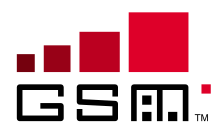
GSM, otherwise known as global system for mobile communications, is an open, digital cellular technology used for transmitting mobile voice and data services.
GSM was created by the European Telecommunications Standards Institute (ETSI) in the early 1990s, when second generation telecommunication technologies started to be deployed in Finland.
In 2014, it became the global standard for mobile communications with 90% of the global market share.
Want a more technical insight? Head onto the next page.
According to the GSMA, GSM supports voice calls and data transfer speeds of up to 9.6 kbps, together with the transmission of SMS (Short Message Service).
GSM operates in the 900MHz and 1.8GHz bands in Europe and the 1.9GHz and 850MHz bands in the US. GSM services are also transmitted via 850MHz spectrum in Australia, Canada and many Latin American countries.
The use of harmonised spectrum across most of the globe, combined with GSM’s international roaming capability, allows travelers to access the same mobile services at home and abroad.






